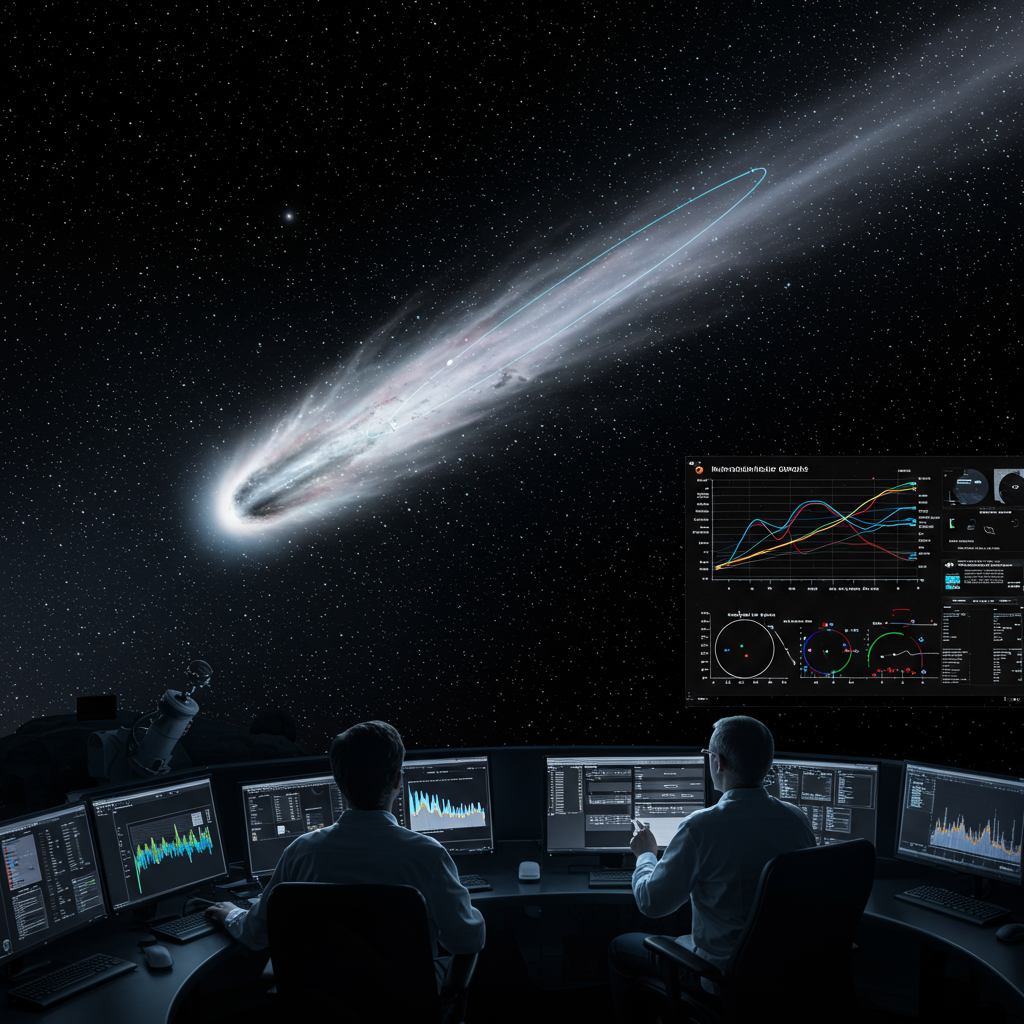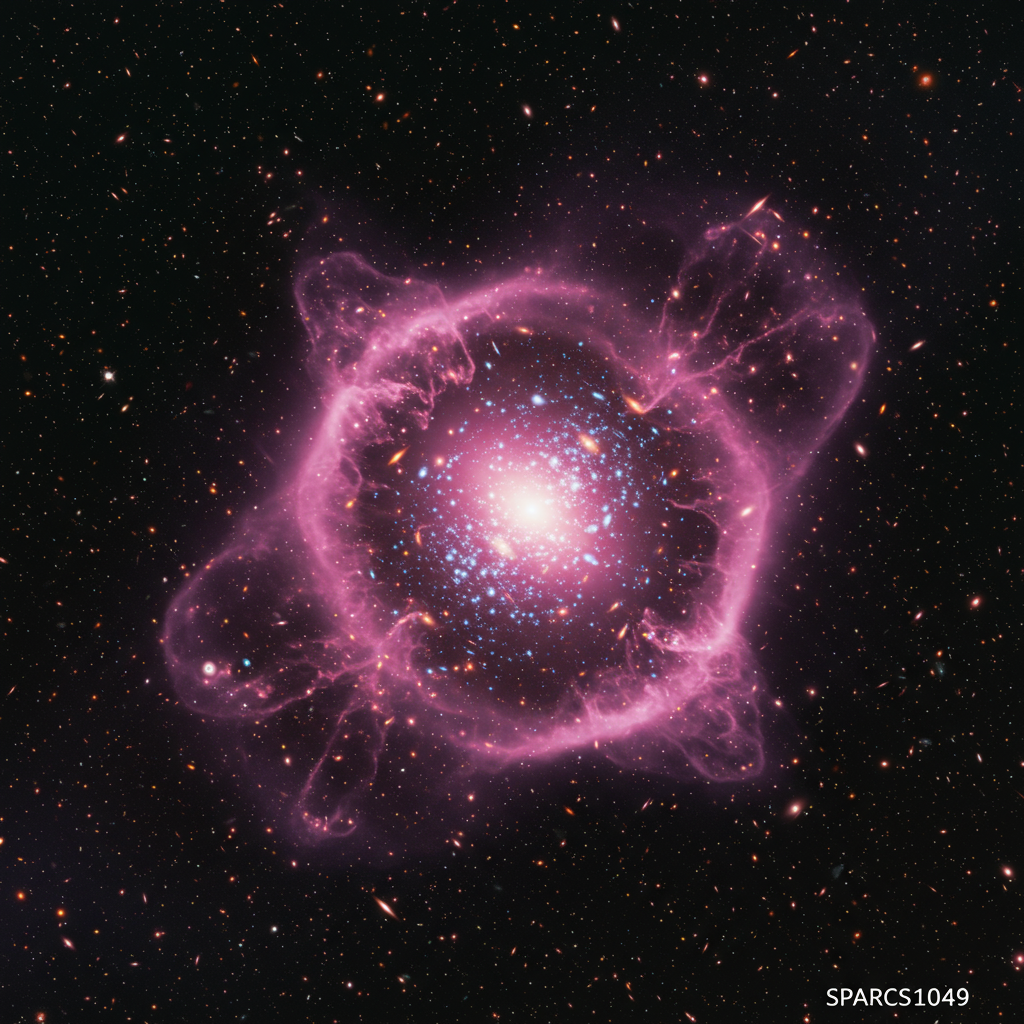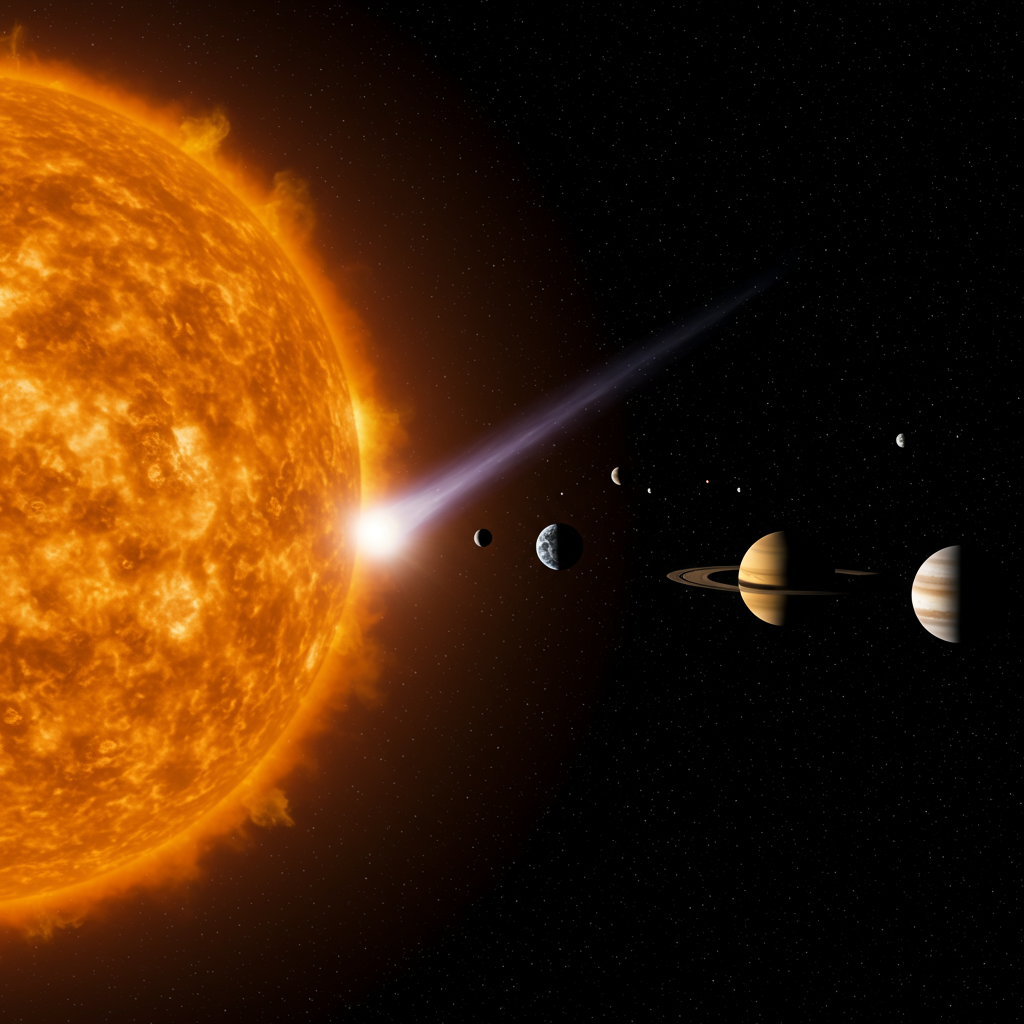A cosmic speedster from beyond our solar system is currently making a brief visit, captivating astronomers worldwide. This newly identified celestial traveler, designated 3I/atlas, marks only the third time such an object originating outside our star system has been observed passing through our local neighborhood. Its arrival offers a rare glimpse into the material makeup of distant planetary systems.
The object, believed to be a comet, was initially flagged by the NASA-funded ATLAS (Asteroid Terrestrial-impact Last Alert System) telescope network based in Chile. Following the initial alert, astronomers rapidly reviewed archival data from various telescopes. They successfully tracked the visitor’s path extending back several weeks, pinpointing its apparent arrival direction from the constellation Sagittarius.
Why Astronomers Know It’s Not From Here
Determining if a celestial object is an interstellar visitor relies heavily on analyzing its motion through space. For 3I/ATLAS, its exceptional speed and trajectory are the definitive giveaways. Objects permanently bound to our Sun, like planets, asteroids, and most comets, follow elliptical orbits that eventually bring them back around. Think of Earth’s nearly circular path or the stretched ovals of some comets.
However, 3I/ATLAS is traveling on a path that is essentially a straight line relative to the Sun. This hyperbolic trajectory, characterized by an orbital eccentricity greater than one, means the Sun’s gravity isn’t strong enough to capture it. It’s just passing through and will leave our solar system permanently.
Observations confirm 3I/ATLAS is moving at speeds exceeding 37 miles per second (about 133,200 miles per hour). This velocity is far too high for an object originating within our solar system to maintain unless it received a massive gravitational boost. Dr. Paul Chodas, director at NASA’s Center of Near-Earth Object Studies, noted that extrapolating the object’s motion backward clearly shows it began its journey far outside our solar system. It has likely been traversing the vast emptiness of interstellar space for millions of years before this chance encounter.
Comparing This Visitor to Past ISOs
3I/ATLAS joins an exclusive club of confirmed interstellar objects detected within our solar system. The first, ‘Oumuamua, was spotted in 2017, followed by 2I/Borisov in 2019. Both generated immense scientific interest, with ‘Oumuamua, a cigar-shaped object, even prompting speculation due to its unusual non-gravitational acceleration without a visible tail. Scientists later proposed ‘Oumuamua might be a ‘dark comet,’ propelled by unseen outgassing.
Early observations suggest 3I/ATLAS differs significantly from its predecessors. Astrophysicist Darryl Z. Seligman, studying the object, described it as “crazy and exciting” precisely because it doesn’t closely resemble either ‘Oumuamua or Borisov. Critically, 3I/ATLAS appears “shockingly bright” and substantially larger than both previous visitors. Its estimated diameter is around 12 miles (20 kilometers), significantly greater than ‘Oumuamua.
This size and brightness are crucial advantages for astronomers. While ‘Oumuamua was detected when relatively close, 3I/ATLAS was spotted much farther out. Its inherent luminosity means telescopes can observe it for a considerably longer period, offering an unprecedented window for data collection compared to the fleeting observations of the first two ISOs.
Global Rush to Observe 3I/ATLAS
The discovery of a new interstellar guest has ignited a flurry of activity within the astronomical community. Telescopes around the world are now scrambling for time to observe 3I/ATLAS. Experts anticipate that within weeks, virtually every major telescope on Earth and in space will have focused its gaze upon this visitor.
Astronomer Teddy Kareta highlighted the palpable excitement. He noted that planetary astronomers immediately sought telescope time upon hearing the news. Although several months of observation might be possible, the push is on for early data. Understanding the object’s behavior – how it’s evolving and whether it possesses any unexpected properties – is critical for planning subsequent, more detailed observations throughout its passage.
Initial images, like those captured by Gianluca Masi’s Virtual Telescope Project, are already providing valuable insights. The object’s arrival direction from the galactic center is also noted as distinct from previous ISOs.
Unlocking Secrets of Distant Star Systems
Studying interstellar objects isn’t just about cataloging cosmic oddities. These visitors are considered invaluable samples of material from other planetary systems. They are essentially building blocks – asteroids and comets – that formed around other stars and were subsequently ejected into interstellar space.
By meticulously analyzing the physical and chemical properties of 3I/ATLAS, astronomers can compare them to the comets and asteroids in our own solar system. This comparison provides direct clues about the conditions, materials, and formation processes occurring around faraway stars. For instance, determining its composition, especially its ice content, can suggest whether it formed close to its parent star or farther out, perhaps subsequently ejected by a giant planet.
Immediate research priorities include confirming its cometary nature, identifying the specific materials it might be shedding as it nears the Sun, and understanding the process causing this activity. The lingering scientific debate surrounding ‘Oumuamua’s peculiar acceleration underscores the importance of thoroughly studying any non-gravitational forces acting on 3I/ATLAS. While its exact origin point remains unknown, improved orbital data might help astronomers make educated guesses about its home star system in the coming months.
Tracking Its Journey Through Our Solar System
For those wondering about potential impacts, astronomers assure that 3I/ATLAS poses absolutely no threat to Earth. Its closest approach to our planet will occur on December 19, at a safe distance of 167 million miles (270 million kilometers).
Currently, the object is roughly 420 million miles (675 million kilometers) from Earth and about 416 million miles (670 million kilometers) from the Sun. Its closest approach to the Sun is expected around October 30, passing at a distance of 130 million miles (210 million kilometers). Astronomically speaking, it will also make a relatively close pass by Mars on October 2, coming within 18 million miles (30 million kilometers) of the red planet. For context, Earth orbits the Sun at approximately 93 million miles.
Gianluca Masi mentioned that 3I/ATLAS is currently visible in the Sagittarius constellation. Observing conditions will improve in the coming months, although the full moon might pose a temporary challenge. Astronomers anticipate the object will remain observable with ground-based telescopes through September. It is expected to reappear from behind the Sun in early December and should be visible well into mid-2026, providing an extended period for study.
The Future of Interstellar Discovery
The detection of 3I/ATLAS comes at a time when our ability to find and study interstellar visitors is rapidly advancing. While current methods have found only three such objects, the true number passing through our solar system could be far higher. Some research suggests that potentially a million or more interstellar objects, primarily larger asteroids, could reside unseen in the outer reaches of our solar system, some possibly originating from nearby systems like Alpha Centauri. Citizen science projects are also increasingly contributing to the discovery of other types of unusual, high-velocity objects.
Upcoming astronomical tools promise to revolutionize the detection and analysis of ISOs. The James Webb Space Telescope (JWST), with its infrared capabilities, can analyze the chemical signatures of gases released by comets, even potentially identifying faint outgassing from ‘dark comets’ that lack visible tails.
Even more transformative will be the Legacy Survey of Space and Time (LSST) at the Rubin Observatory. This powerful telescope will scan the southern sky nightly, detecting much fainter objects. Experts like Darryl Seligman project that LSST could identify new interstellar objects on a monthly or even weekly basis. This dramatic increase in detections will provide astronomers with a wealth of data, helping them better understand the diversity of ISOs and their prevalence. A higher detection rate also increases the odds of finding an object close enough for a future dedicated spacecraft mission, perhaps utilizing advanced guidance systems like the proposed Neural-Rendezvous framework for spacecraft swarms.
The excitement surrounding 3I/ATLAS is more than just about a single object; it represents a growing opportunity to directly probe the composition and dynamics of planetary systems beyond our own, ushering in a new era of interstellar exploration.
Frequently Asked Questions
What is 3I/ATLAS and why is it important?
3I/ATLAS is a newly discovered celestial object believed to be a comet. It is significant because it is only the third confirmed object originating from outside our solar system ever observed passing through. Studying it allows astronomers to analyze material that formed around another star, providing unique insights into exoplanetary systems.
How do astronomers know 3I/ATLAS is from interstellar space?
Astronomers determine 3I/ATLAS’s interstellar origin based on its extreme speed and its orbital path. It is traveling too fast to be gravitationally bound to our Sun and follows a hyperbolic trajectory, meaning it will not return after passing through. This distinctive motion indicates it originated far beyond our solar system.
Can I see the interstellar object 3I/ATLAS?
Observing 3I/ATLAS typically requires a telescope. It is currently located in the direction of the Sagittarius constellation. While challenging during the full moon, observation opportunities with small telescopes are expected to improve in the coming months. It will be observable through September, reappear in December, and potentially remain visible until mid-2026.
Word Count Check: 1160




